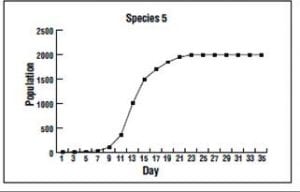Now that we know the basics of carrying capacity and how humans impact the carrying capacity of our planet, let’s think about bringing this complex topic into the classroom.
The why: The study of carrying capacity makes it easy to use many of the most highly-effective teaching strategies. Not only do these strategies engage learners, they are also (conveniently) called for in the new Common Core and NGSS standards – bonus!
1. Cross curricular learning: Students graph populations and analyze data to understand consumption patterns and resource availability. It’s math, science, and human geography rolled into one.
2. Issues-based problem solving: Students will be excited to study a problem that’s real world and meaningful – especially one that expert adults are still trying to figure out.
3. Inquiry: A question with a non-formulaic answer (for example, What’s the Carrying Capacity of our Planet?) will peak students’ curiosity and keep them engaged.
The how: Population Education has lesson plans and student readings for the study of carrying capacity at every step of the way. Introduce the concept using the activity Panther Hunt, graph growth curves of animal species in the activity Pop Ecology Files, and investigate our human footprint through lessons like Global Warming Begins at Home USA and Something for Everyone.



